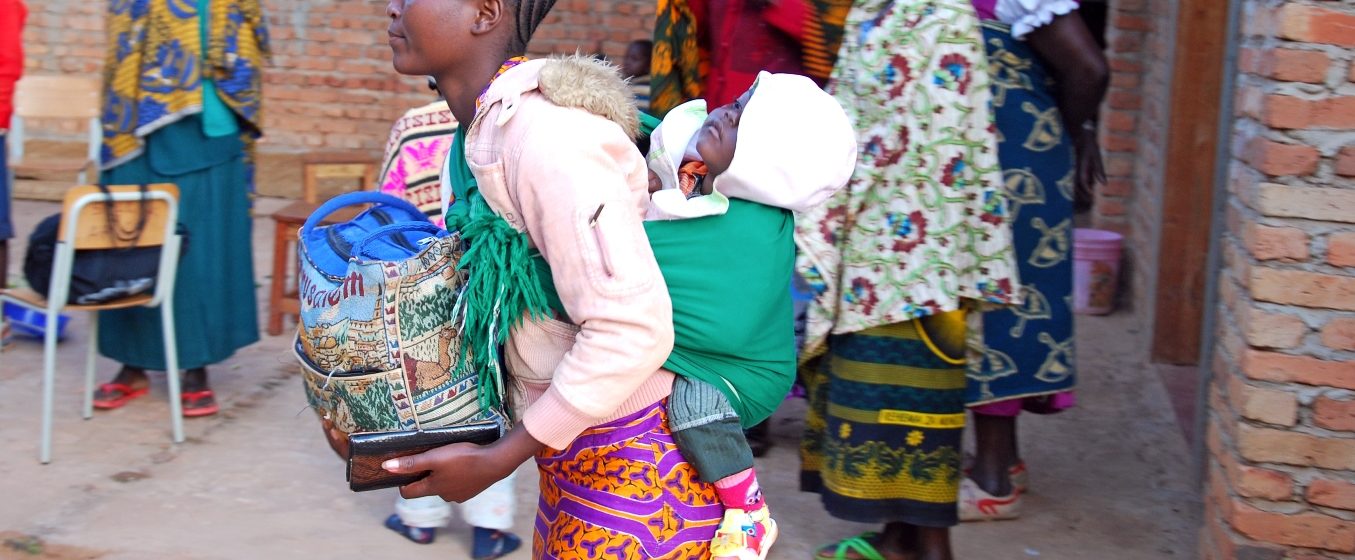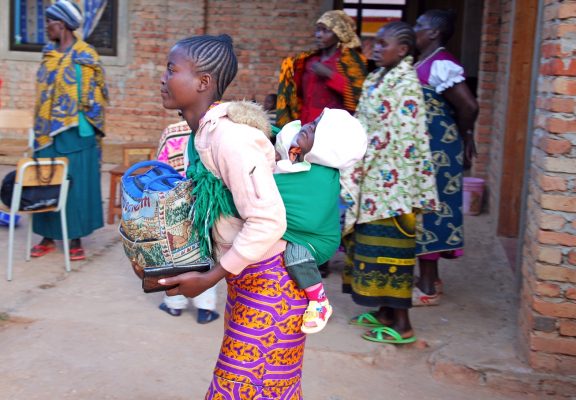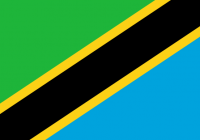


Tanzania
Tanzania is an East African country known for its vast wilderness areas. They include the plains of Serengeti National Park, a safari mecca populated by the “big five” game (elephant, lion, leopard, buffalo, rhino), and Kilimanjaro National Park, home to Africa’s highest mountain. Offshore lie the tropical islands of Zanzibar and Mafia Marine Park, where whale sharks swim through reefs. Its population is 49 million people and GDP per capita of USD 694.
Tanzania has led a robust multi-sectoral effort to tackle AIDS, malaria and tuberculosis through prevention, care, treatment, and support services. Tanzania had an impressive national scale-up of antiretroviral treatment, which resulted in a tenfold increase in the number of patients enrolled in treatment from 2005 to 2012. Over 26 million mosquito nets were distributed through the vouchers scheme, under-5 and the universal campaign. The rates of tuberculosis detection and treatment have increased dramatically, and TB deaths are declining. However, challenges remain. Tanzania has a high HIV prevalence, and the rate of HIV infection is high. Malaria is the single most significant disease in Tanzania, and the country has the third-largest population at risk of stable malaria in Africa. TB continues to be a major public health problem, more than 20 years after launching the national TB program. The rapid increase of TB in Tanzania is mainly attributed to the HIV epidemic, but factors like population growth and urban overcrowding have also contributed.
AHO PRIORITIES FOR HEALTH DELIVERY PLAN IN TANZANIA
- Prevent, control, and reduce communicable diseases, with emphasis on the broad range of diseases that affect the health of the Tanzanian population (vector-borne, STI, HIV/AIDS, diarrheal diseases, respiratory infections, tuberculosis, emerging diseases, including resistance to antibiotics, vaccine-preventable diseases, and leprosy).
- Healthy growth and development. To this end, care will focus on mothers, children, and adolescents. Addressing maternal mortality will be a key objective of technical cooperation, as will infant mortality, with emphasis on neonatal mortality; malnutrition; psychosocial development, and a healthy school environment; and healthy lifestyles for adolescents. Most behavioural risks to health should be addressed by technical cooperation.
- Disaster preparedness, management, and response. Special attention will be given to mitigation, with the focus on public water utilities, sanitary infrastructure, and health services.
- Achievement of universal access to health systems that are integrated, equitable, and sustainable, reorienting health sector reform to strengthen the steering role of the health authorities and the essential public health functions; and development of human resources for health to help attain greater coverage, effectiveness, and efficiency of health services at the national and institutional levels, prioritizing the first level of care and community participation.
- Promote the incorporation of health issues in social, economic, environmental, and development policies, promoting the concept of health in human development among policymakers and the drafting of health legislation.
- Develop and strengthen the capacity to collect, analyse, and disseminate health information, prioritizing vital statistics and data analysis to facilitate timely information on the country’s health situation.
PROGRAMMES & PROJECTS
1. DEVELOPMENT OF HEALTH POLICIES , SYSTEMS , AND SERVICES
PURPOSE
To make progress toward universal access to an integrated, equitable, and unified health system.
EXPECTED RESULTS
- The steering role of the Ministry of Health and Social Welfare (MHSW) and the different levels of the Health System strengthened.
- Information generated on financing, expenditure, inequities, and performance of the public sector health system for use by the government when needed.
- A decentralized management model for service networks established, with emphasis on municipal areas and on participation by those who practice traditional healing.
- Policy for the management and development of human resources in health prepared by consensus and submitted to the government.
- Policies and programs for development of health technologies prepared and placed at the disposal of national authorities.
- Administrative processes for the management of this project implemented efficiently and effectively, in accordance with AHO standards and procedures.
2. ENVIRONMENTAL HEALTH AND DISASTERS
PURPOSE
To improve the quality of environmental health and sanitation services and increase the URAs, as well as the national response capacity to disaster.
EXPECTED RESULTS
- Technical assistance provided for the organization of environmental surveillance and monitoring systems in departmental health services, including the development and strengthening of the country’s toxicology centres.
- Technical assistance provided for the preparation of projects in environmental health and sanitation in municipalities.
- Technical support provided to train personnel from municipalities, departmental health services, and environmental health.
- Technical assistance provided to prepare environmental health projects in indigenous communities.
- Technical support provided for the program to improve water quality nationwide.
- Technical assistance provided to implement the environmental primary care strategy in the country’s departments.
- Technical assistance provided to train professionals in national universities as specialists in environmental health.
- Technical support provided for the Sanitary and Environmental Engineering to hold national symposia, congresses, and courses.
- Technical support provided to develop a nationwide campaign to control the environmental hazards of UV radiation.
- Technical support provided for nationwide implementation of the Disaster Control Program.
- Technical support provided to strengthen the Virtual Health and Environment Library.
- Technical assistance provided to strengthen the Occupational Health Program
3. PREVENTION AND CONTROL OF COMMUNICABLE AND VACCINE-PREVENTABLE DISEASES
PURPOSE
To strengthen public health monitoring, as well as decentralized, participatory, and cooperative management, and maintain vaccination coverage to prevent and control priority and vaccine-preventable communicable, emerging, and re-emerging diseases.
EXPECTED RESULTS
- The public health monitoring system installed and operational in the nine departments.
- Decentralized local capacity in the prevention and control of emerging and re-emerging communicable diseases developed.
- Instruments and processes prepared that facilitate participation in routine public health monitoring and the prevention and control of communicable, emerging, and re-emerging diseases, in cooperation with organized civil society.
- Research and surveillance of emerging, re-emerging, and priority prevalent diseases, and the response to them, initiated and consolidated.
- Follow-up performed of administrative procedures that facilitate technical cooperation to help monitor public
- health and prevent and control communicable, emerging, and re-emerging diseases.
- Support provided to maintain high levels of vaccination coverage with quality biologicals and to implement an active and comprehensive monitoring system.
4. HEALTHY LIFE CYCLE
PURPOSE
To reduce the burden of disease and mortality throughout the life cycle, with special emphasis on the socially excluded population
EXPECTED RESULTS
- National capacity to promote a healthy life cycle strengthened.
- The Integrated Management of Childhood Illness strategy, including the neonatal component, consolidated.
- Healthy spaces created for schoolchildren and adolescents.
- A program to reduce mortality in women from maternity-related causes and cervical cancer prepared and carried out.
- Food and nutrition policies and programs formulated and implemented.
- Social and public participation processes in under stage-by-stage consolidation within integrated health promotion programs.
- Management of the project’s technical-administrative components improved.
5. MANAGEMENT AND COORDINATION OF THE COUNTRY PROGRAM
PURPOSE
To efficiently and effectively exercise the administrative dimension of management of AHO
EXPECTED RESULTS
- The administrative capacity of the AHO strengthened, with the consequent improvement of administrative processes.
- Management information systems of the AHO developed and strengthened.
- Use of the Expanded Textbook Program consolidated in institutions that train health workers through an efficient delivery system for high-quality, scientific instructional materials at prices much lower than market prices.
6. ACCESS TO SCIENTIFIC AND TECHNICAL INFORMATION
PURPOSE
To improve and increase access to scientific and technical information that promotes the country’s application and use of information technology.
EXPECTED RESULTS
- Virtual libraries on health, health and the environment, public health, and nursing developed, strengthened, and updated.
- Basic health libraries strengthened in terms of information, documentation, access to the Internet, and technical assistance.
- Operating capacity of the Information and Documentation Centre of AHO increased and strengthened.
7. TECHNICAL COOPERATION AMONG COUNTRIES
PURPOSE
To contribute to the development and strengthening of cooperative relationships in health among countries through support for the formulation and management of technical cooperation projects among countries within the framework of Pan-Africanism.
EXPECTED RESULTS
- Cooperative ties and mechanisms between countries established within the framework of national priorities and regional and sub-regional commitments
8. SUPPORT FOR NATIONAL HEALTH DEVELOPMENT
PURPOSE
To efficiently and effectively exercise the policy and technical dimensions of the management of AHO
EXPECTED RESULTS
- Technical-administrative capacity of the AHO strengthened.
- Decentralization processes of AHO technical cooperation strengthened.
RESOURCES (USD)
AHO TANZANIA 2020 (USD million)* based on the 2017 population of 57.31 million, World Bank
| SO | BUDGET ITEM | AMOUNT* |
| 1 | Combating communicable diseases |
955 |
| 2 | Tackling non communicable diseases |
1,000 |
| 3 | Addressing determinants of health & risk factors |
950 |
| 4 | Modernising health system and health service |
954 |
| 5 | Improving preparedness, surveillance and response |
958 |
| 6 | Developing good governance & corporate services |
914 |
| Total |
5,731 |
AHO estimates that it needs to spend at least USD100 per capita on health to meet the basic health needs of the people in Africa. This is too far below developed countries e.g. in England it is US$1,300 per capita (2017)

